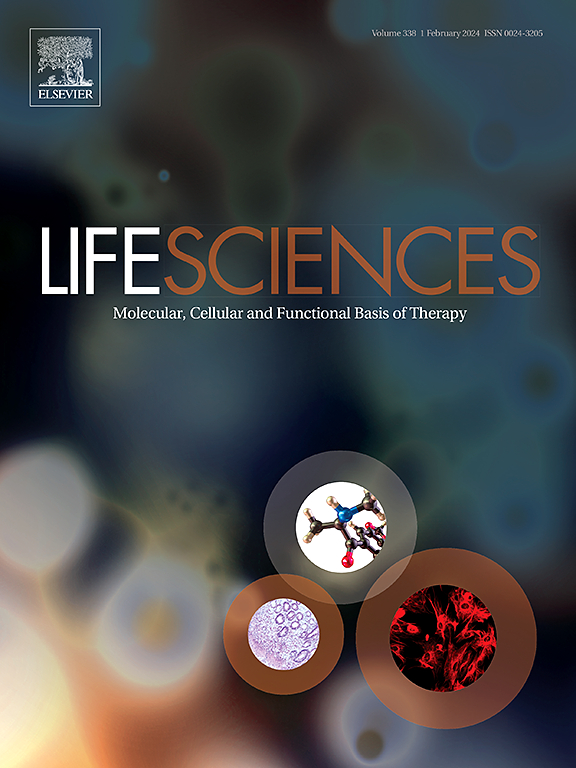Anticancer and therapeutic efficacy of XPO1 inhibition in pancreatic ductal adenocarcinoma through DNA damage and modulation of miR-193b/KRAS/LAMC2/ERK/AKT signaling cascade
IF 5.2
2区 医学
Q1 MEDICINE, RESEARCH & EXPERIMENTAL
引用次数: 0
Abstract
Pancreatic ductal adenocarcinoma (PDAC) is one of the most aggressive and grave malignancies with confined and ineffective therapeutic options. XPO1 is a critical regulator of nuclear export and activation of tumor suppressor proteins. The present study evaluated the therapeutic potential and molecular mechanisms of XPO1 inhibition against PDAC. Firstly, we observed significant overexpression of XPO1 transcript in 179 PDAC patients than 171 normal pancreatic tissues in TCGA transcriptomic dataset. Higher XPO1 transcript levels displayed worse overall and disease-free survival. Further, we confirmed significant upregulation of XPO1 in a panel of PDAC cells. Eltanexor treatment resulted in significant inhibition of cell viability, clonogenic growth, migration, and epithelial-mesenchymal transition (EMT), along with the induction of cell cycle arrest. Mechanistically, eltanexor modulated the expression of key proteins including p21, p27, p53, cyclin B1, cyclin D1, c-Myc, N-cadherin, vimentin, E-cadherin associated with the cell viability, growth, cell cycle and EMT. Additionally, the eltanexor treatment resulted in marked increase in expression of γH2AX, and cleaved PARP, cleaved caspase-9 leading to induction of DNA damage and apoptosis of PDAC cells, respectively. Moreover, eltanexor treatment regulated the expression of key non-coding RNAs including miR193b, DINO, MALAT-1, H19, and SOX21-AS1 linked with tumorigenesis. Our results revealed a correlation among miR193b/KRAS/LAMC2, XPO1/KRAS, and LAMC2/KRAS. The findings also revealed that eltanexor treatment rescued the expression of miR193b which acts as a sponge for LAMC2 and KRAS resulting in the suppression of AKT/ERK downstream signaling cascade in PDAC. Interestingly, the combination of eltanexor with gemcitabine showed significant anticancer activity in PDAC cells. Altogether, our findings revealed the crucial role of XPO1 in modulating the expression of oncogenic proteins, ncRNAs, and DNA damage during PDAC progression as well as identified novel therapeutic miR-193b/KRAS/LAMC2/ERK/AKT axis.

通过DNA损伤和miR-193b/KRAS/LAMC2/ERK/AKT信号级联调控XPO1抑制胰腺导管腺癌的抗癌和治疗效果
胰腺导管腺癌(PDAC)是最具侵袭性和严重的恶性肿瘤之一,治疗方法有限且无效。XPO1是核输出和肿瘤抑制蛋白激活的关键调节因子。本研究评估了XPO1抑制PDAC的治疗潜力和分子机制。首先,我们观察到179名PDAC患者的XPO1转录物比TCGA转录组数据集中的171名正常胰腺组织明显过表达。XPO1转录物水平越高,总体生存率和无病生存率越差。此外,我们在PDAC细胞中证实了XPO1的显著上调。Eltanexor治疗可显著抑制细胞活力、克隆生长、迁移和上皮-间质转化(EMT),并诱导细胞周期阻滞。在机制上,eltanexor调节了与细胞活力、生长、细胞周期和EMT相关的关键蛋白的表达,包括p21、p27、p53、cyclin B1、cyclin D1、c-Myc、N-cadherin、vimentin、E-cadherin。此外,eltanexor处理导致γ - h2ax、裂解PARP、裂解caspase-9的表达显著增加,分别诱导PDAC细胞DNA损伤和凋亡。此外,eltanexor治疗可调节与肿瘤发生相关的关键非编码rna的表达,包括miR193b、DINO、MALAT-1、H19和SOX21-AS1。我们的研究结果显示miR193b/KRAS/LAMC2、XPO1/KRAS和LAMC2/KRAS之间存在相关性。研究结果还显示,eltanexor治疗挽救了miR193b的表达,miR193b作为LAMC2和KRAS的海绵,导致PDAC中AKT/ERK下游信号级联的抑制。有趣的是,埃他exor与吉西他滨的组合在PDAC细胞中显示出显著的抗癌活性。总之,我们的研究结果揭示了XPO1在调节PDAC进展过程中致癌蛋白、ncRNAs和DNA损伤的表达中的关键作用,以及鉴定出的新型治疗性miR-193b/KRAS/LAMC2/ERK/AKT轴。
本文章由计算机程序翻译,如有差异,请以英文原文为准。
求助全文
约1分钟内获得全文
求助全文
来源期刊

Life sciences
医学-药学
CiteScore
12.20
自引率
1.60%
发文量
841
审稿时长
6 months
期刊介绍:
Life Sciences is an international journal publishing articles that emphasize the molecular, cellular, and functional basis of therapy. The journal emphasizes the understanding of mechanism that is relevant to all aspects of human disease and translation to patients. All articles are rigorously reviewed.
The Journal favors publication of full-length papers where modern scientific technologies are used to explain molecular, cellular and physiological mechanisms. Articles that merely report observations are rarely accepted. Recommendations from the Declaration of Helsinki or NIH guidelines for care and use of laboratory animals must be adhered to. Articles should be written at a level accessible to readers who are non-specialists in the topic of the article themselves, but who are interested in the research. The Journal welcomes reviews on topics of wide interest to investigators in the life sciences. We particularly encourage submission of brief, focused reviews containing high-quality artwork and require the use of mechanistic summary diagrams.
 求助内容:
求助内容: 应助结果提醒方式:
应助结果提醒方式:


